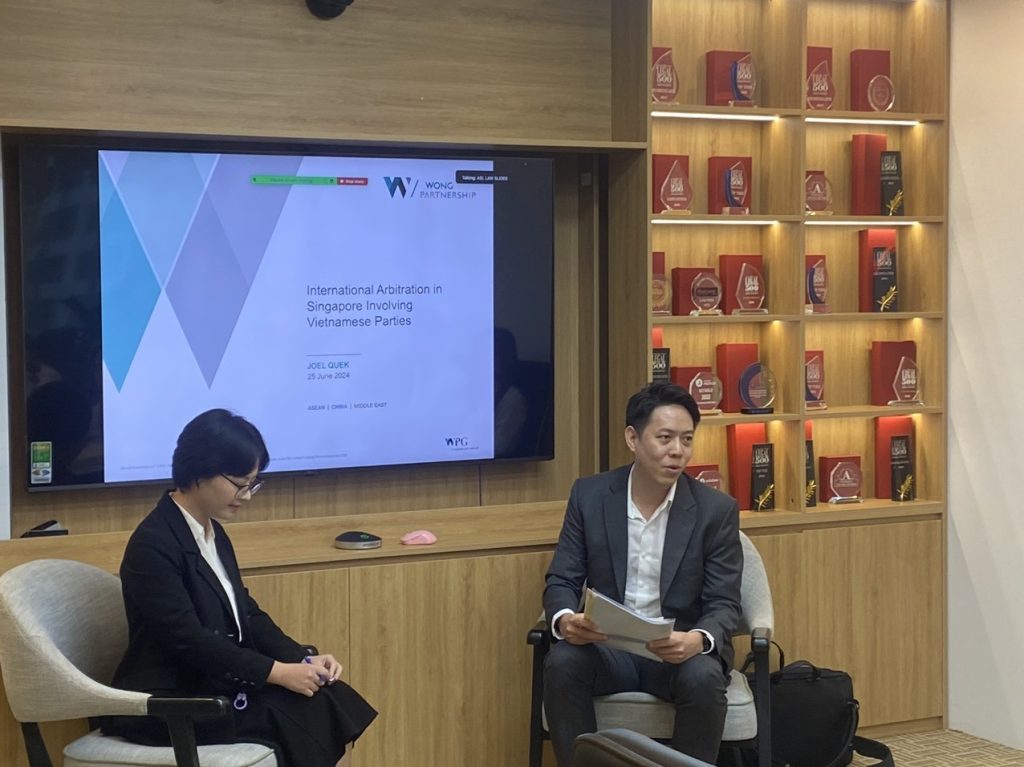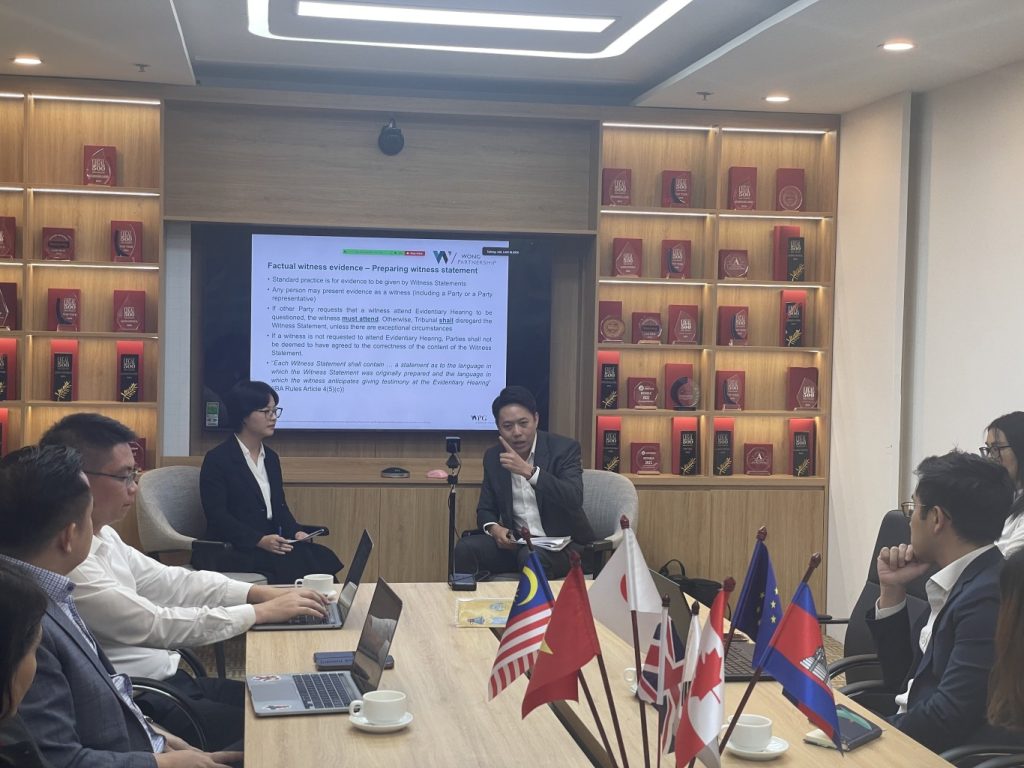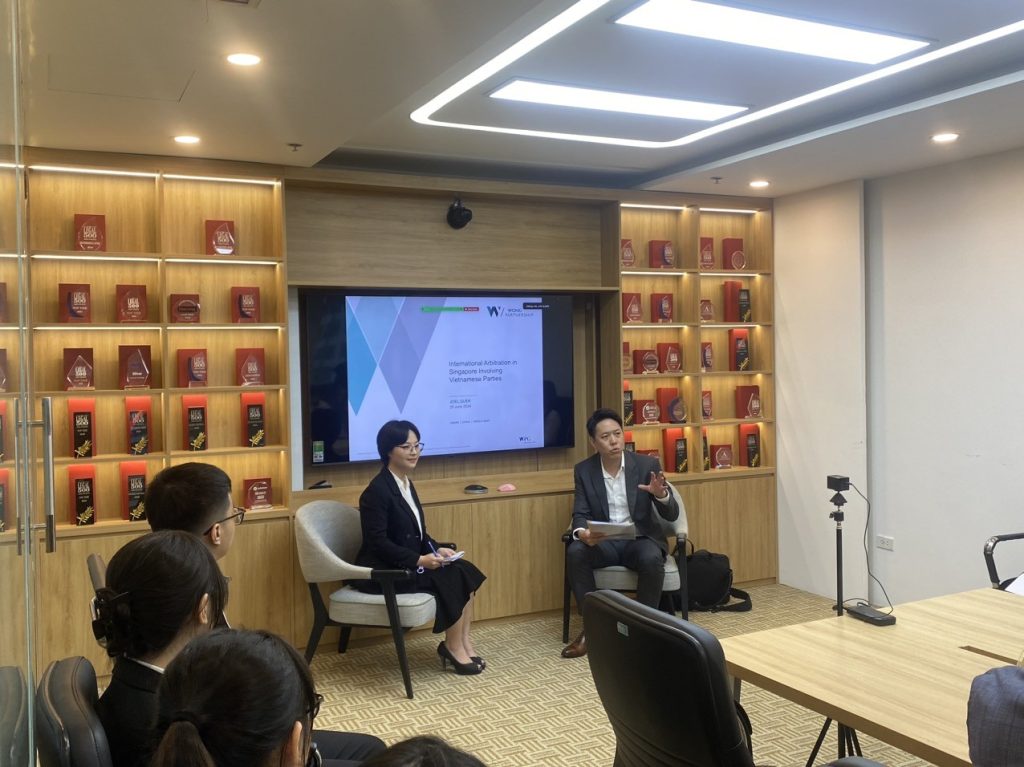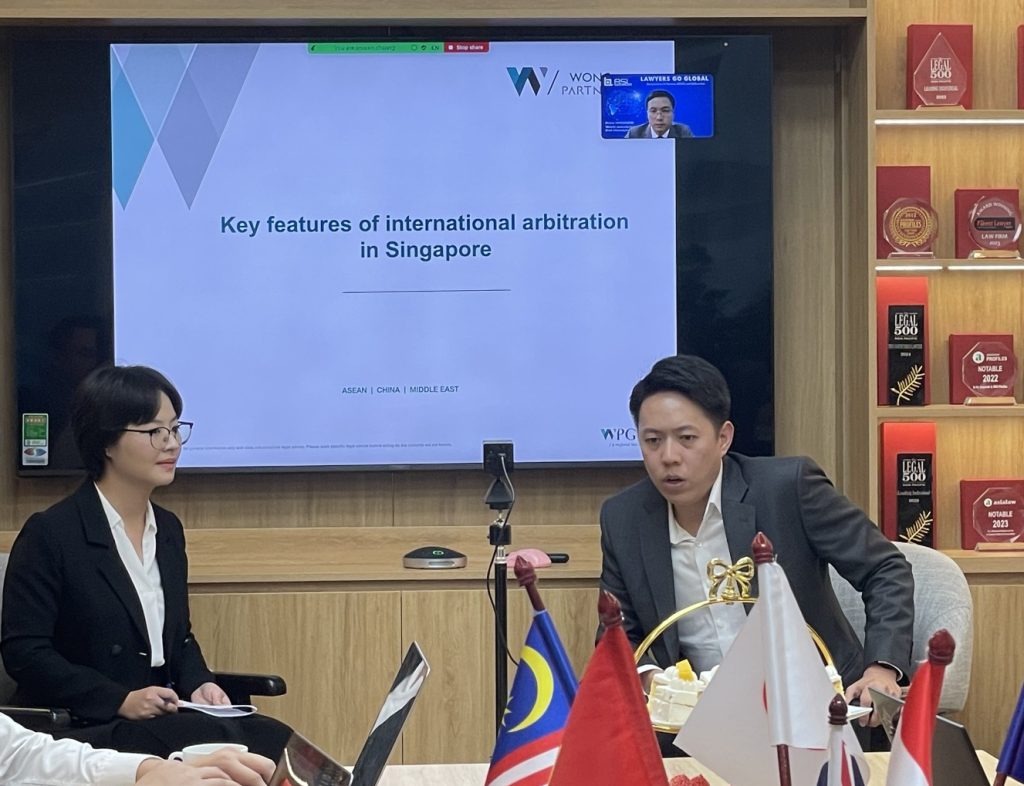On June 25, 2024, ASL LAW, in collaboration with Singaporean law firm WongPartnership LLP (one of the Big 4 law firms in Singapore), organized the workshop “Experience in Resolving Disputes through International Arbitration in Singapore and Enforcement of Arbitral Awards in Vietnam”.
This event highlighted the intricacies of navigating international arbitration for Vietnamese businesses and provided key insights into effective dispute resolution strategies.

Engaging in dispute resolution through the Singapore International Arbitration Centre (SIAC) presents Vietnamese businesses with a structured and internationally recognized process. However, navigating this process effectively requires a thorough understanding of several key aspects. Here are 4 critical notes for Vietnamese businesses when participating in SIAC arbitration:
1. Commencement of Arbitration Proceedings
Pre-Arbitration Conditions
Before initiating arbitration, it is crucial to review the arbitration clause in the contract to check for any pre-arbitration conditions. Some clauses may mandate that parties attempt to resolve the dispute amicably through negotiation or mediation before proceeding to arbitration.
Notice of Arbitration
The arbitration process formally begins with the Notice of Arbitration, as stipulated in Rule 3 of the SIAC Rules 2016. This notice may include a Statement of Claim (Rule 20.2), detailing the claims and supporting evidence. The responding party must then issue a Response to the Notice of Arbitration (Rule 4), which may contain a Statement of Defence (Rule 20.3) and a Statement of Counterclaim (Rule 20.4). In turn, the claimant can respond to any counterclaims with a Statement of Defence to the Counterclaim (Rule 20.4).
Requests for Joinder, Multiple Contracts, and Consolidation
Parties can request the joinder of additional parties (Rule 7), the arbitration of multiple contracts (Rule 6), and the consolidation (Rule 8), providing flexibility in resolving complex disputes.

2. Prima Facie Decision on Jurisdiction
Under Rule 28.1 of the SIAC Rules 2016, the respondent has the opportunity to raise early objections to the existence or validity of the arbitration agreement or SIAC’s competence before the Tribunal is constituted. If the SIAC Court is not prima facie satisfied that the arbitration should continue, it may terminate the proceedings early. However, the Tribunal retains the ultimate authority to rule on its own jurisdiction once constituted. Parties can re-raise jurisdictional objections even after the SIAC Court has allowed the arbitration to proceed.
3. Constitution of the Arbitral Tribunal
The constitution of the arbitral tribunal is a critical stage, given the significant role of arbitrators in the process. According to Rules 9-17 of the SIAC Rules 2016:
- The arbitrator can be appointed as the sole arbitrator (Rule 10) or as a tribunal of three (Rule 11).
- In multi-party disputes, Rule 12 governs the appointment of arbitrators.
- Arbitrators must meet specific qualifications (Rule 13).
- Parties can challenge arbitrators (Rule 14), and the process for resolving these challenges is detailed in Rule 15 (Notice of Challenge) and Rule 16 (Decision on Challenge).
- If necessary, an arbitrator can be replaced (Rule 17).
4. Procedural Order No. 1 and Arbitral Proceedings
Written Submissions: Pleadings vs. Memorials
Arbitration proceedings involve different styles of written submissions:
- Memorials: Parties present their full claims or defenses, including all evidence and arguments of fact and law, along with supporting documents, witness statements, expert reports, and legal authorities.
- Pleadings: Initially, parties submit brief statements outlining the factual basis for their claims without extensive evidence or detailed legal arguments. Detailed submissions, including documentary, witness, and expert evidence, follow in subsequent stages.
Managing Evidence and Case Preparation
- Procedural Case Management Conference (CMC): This conference is essential for organizing the proceedings.
- Documentary Evidence: Parties can request documentary evidence.
- Hearing Preparation: This includes exchanging written opening statements, submitting agreed hearing bundles, and, if applicable, agreeing on protocols for virtual hearings.

Merits Hearing and Post-Hearing Submissions
The merits hearing is the core of the arbitration, where parties present their cases. Following the hearing, parties submit written closing statements and cost submissions.
By understanding and meticulously preparing for these key stages, Vietnamese businesses can navigate SIAC arbitration more effectively, ensuring a well-organized and strategic approach to dispute resolution.
***ASL Law is a leading full-service and independent Vietnamese law firm made up of experienced and talented lawyers. ASL Law is ranked as the top tier Law Firm in Vietnam by Legal500, Asia Law, WTR, and Asia Business Law Journal. Based in both Hanoi and Ho Chi Minh City in Vietnam, the firm’s main purpose is to provide the most practical, efficient, and lawful advice to its domestic and international clients. If we can be of assistance, please email to [email protected].
ASL LAW is the top-tier Vietnam law firm for in-depth legal advice in Vietnam and internationally. If you need any advice, please contact us for further information or collaboration.

 Tiếng Việt
Tiếng Việt 中文 (中国)
中文 (中国) 日本語
日本語

